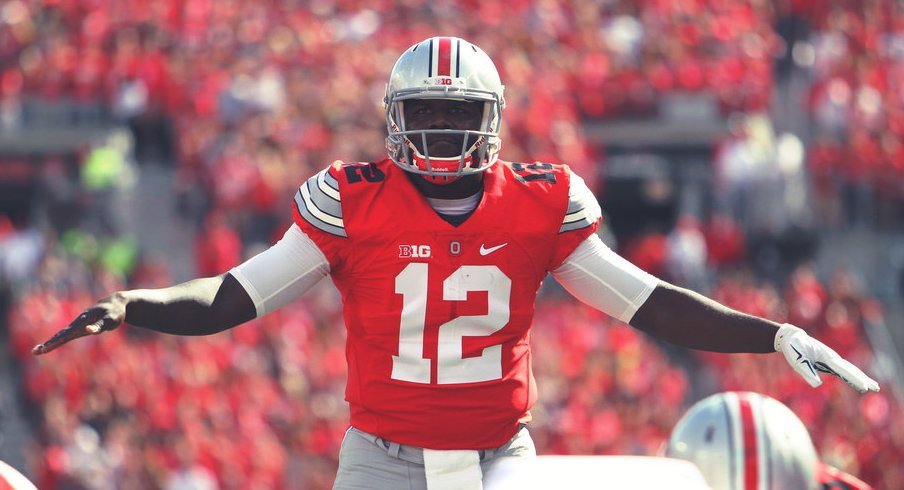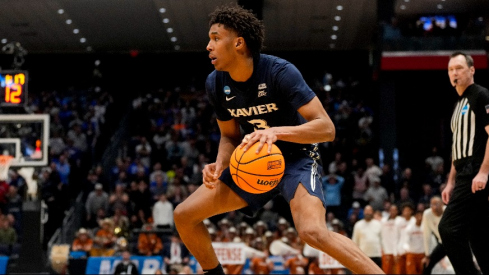After a rollercoaster ride at Ohio State that saw him lead the Buckeyes through the 2015 postseason on the way to the College Football Playoff championship only to ride the bench for the latter half of the 2016 slate, Cardale Jones is now just six weeks from being an NFL quarterback.
Jones has all the physical tools teams look for in a professional signal-caller while questions remain about his ability to effectively read defenses and accurately make all the throws required at the next level. To his credit, Jones gave himself a boost with a solid Pro Day effort last week.
Whether or not he puts it all together in the NFL will take years to unfold but with his ceiling, a team will definitely come calling in hopes of striking gold. By extension, how he eventually stacks up to fellow former Buckeye quarterbacks to play in the pros remains to be seen.
If he were to bust out and become a big-time star in the NFL, he'd be the first quarterback from Ohio State to do so. For more perspective, which illustrates the struggles of the program to develop a big-time NFL signal-caller, here's a rundown of past Buckeyes to play the QB position at the next level.
| QUARTERBACK | RD | PK | YEAR | YEARS | GAMES | GS | COMP | ATT | COMP% | YDS | TD | INT |
|---|---|---|---|---|---|---|---|---|---|---|---|---|
| M. TOMCZAK | N/A | NA | 1985 | 15 | 185 | 73 | 1,248 | 2,337 | 53.4% | 16,079 | 88 | 106 |
It's pretty amazing the gold standard for Ohio State quarterback success in the NFL is Mike Tomczak considering he wasn't even selected in the 1985 Draft before eventually signing with the Chicago Bears.
To his credit, the Calumet City, Illinois product put together a 15-year NFL career spanning four different franchises though his most prolific years came with the Bears and later the Pittsburgh Steelers.
Though Tomczak started at least one game per season from 1986 to 1996, he was largely a career backup who saw double-digit starts in just two seasons (1989, 1996).
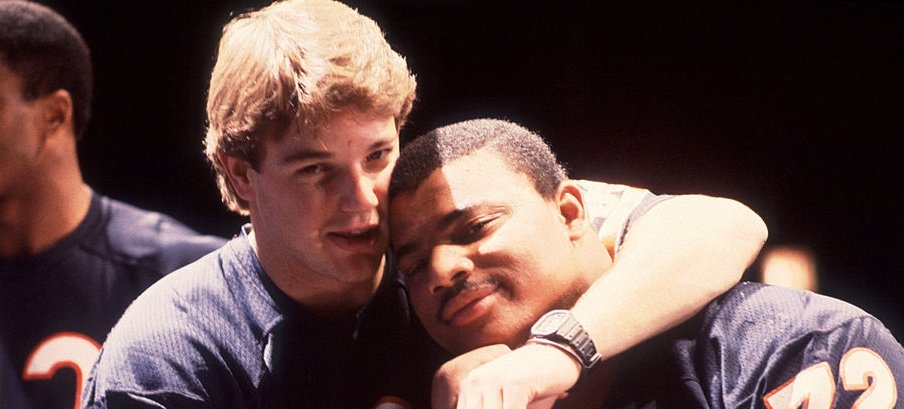
Tomczak went 5-6 as a starter for the Bears in '86 passing for 2,058 yards with 16 touchdowns and 16 picks. With Pittsburgh in '96, he posted a 10-5 record as the starter throwing for 2,767 yards with 15 touchdowns against 17 interceptions.
He earned a Super Bowl ring in his rookie season with Chicago as a member of the famous 1985 Bears and even threw down some mean guitar in the Super Bowl Shuffle video. Over the 1986-87 seasons combined, Tomczak set a then-NFL record winning his first 10 career starts.
Tomczak currently stands 130th in NFL history in passing yards and 144th in passing touchdowns. Not bad for a player nobody opted to pick ahead of the other 336 guys selected in the 1985 Draft.
| QUARTERBACK | RD | PK | YEAR | YEARS | GAMES | GS | COMP | ATT | COMP% | YDS | TD | INT |
|---|---|---|---|---|---|---|---|---|---|---|---|---|
| K. GRAHAM | 8 | 211 | 1992 | 8 | 81 | 38 | 694 | 1,339 | 51.8% | 7,801 | 39 | 33 |
Slotted in the two-hole on this list is Kent Graham who was a one-year starter for the Buckeyes after he transferred in from Notre Dame following his sophomore season.
An 8th round pick in the 1992 Draft by the New York Giants, Graham enjoyed two different stints with the G-Men sandwiched between two years with the Arizona Cardinals.
Over an eight year career, Graham appeared in 81 games and went 17-21 as a starter including a 10-5 mark during his final two seasons with the Giants. His best statistical seasons occurred in 1996 (Arizona) when he threw for 1,624 yards with 12 touchdowns and seven picks in eight starts and in 1999 (New York) as he tallied 1,697 yards with nine touchdowns and nine interceptions in nine starts.
His best singular stretch, however, came in over the final five games in 1998 when he took over as the starter for Danny Kannell and went 5-1 including a miraculous win over an undefeated Denver Broncos squad looking to push its season winning streak to 14 games.
| QUARTERBACK | RD | PK | YEAR | YEARS | GAMES | GS | COMP | ATT | COMP% | YDS | TD | INT |
|---|---|---|---|---|---|---|---|---|---|---|---|---|
| T. TUPA | 3 | 68 | 1988 | 9 | 220 | 13 | 259 | 504 | 51.4% | 3,430 | 12 | 25 |
| B. HOYING | 3 | 85 | 1996 | 5 | 22 | 13 | 244 | 456 | 53.5% | 2,544 | 11 | 15 |
Indicative of the lack of truly great Buckeye quarterbacks in the pros, Tom Tupa, who was primarily a punter in his NFL career, is the next man up.
Tupa lasted 16 years as a punter while logging nine as mostly a backup quarterback though he did log 11 of his 13 career starts as the primary guy for the Arizona Cardinals in 1991.
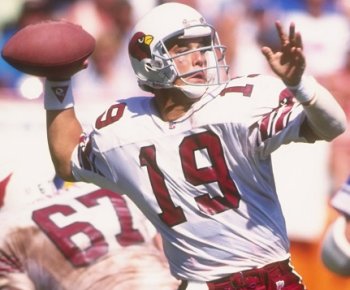
During his lone season as a starter Tupa went 4-7 as he completed 52% of his passes for 2,053 yards with six touchdowns against 13 interceptions generating a 62 quarterback rating. Despite the pedestrian numbers, he did rank 10th in the league with 12.4 yards per completion.
A fun fact for Tupa, the longtime placekick holder recorded the NFL's first ever 2-point conversion for the Cleveland Browns in 1994.
A 3rd round selection of the Philadelphia Eagles in 1996, it looked like Bobby Hoying might be on his way to a strong NFL career as he took over the starting gig late in his second season and completed 57% of his throws for 1,573 yards with 11 touchdowns against six interceptions but the wheels fell off in 1998.
Entering the season as the starter, Hoying lost his first five starts and went on to complete just 51% of his passes with nine picks against zero touchdowns. Hoying would be traded to Oakland after the season and appeared in just six games over two years for the Raiders before a serious elbow injury ended his career.
| QUARTERBACK | RD | PK | YEAR | YEARS | GAMES | GS | COMP | ATT | COMP% | YDS | TD | INT |
|---|---|---|---|---|---|---|---|---|---|---|---|---|
| T. PRYOR | 3* | 1 | 2011 | 3 | 15 | 10 | 170 | 302 | 56.3% | 1,953 | 9 | 12 |
| T. SMITH | 5 | 174 | 2007 | 4 | 20 | 8 | 121 | 234 | 51.7% | 1,734 | 8 | 5 |
| A. SCHLICHTER | 1 | 4 | 1982 | 3 | 13 | 6 | 91 | 202 | 45.0% | 1,006 | 3 | 11 |
The next grouping – the 1,000 to 2,000 yard club – starts with Terrelle Pryor who played three seasons as a quarterback before attempting to stay in the league as a wide receiver.
After Al Davis tabbed Pryor in the 2011 Supplemental Draft, the Jeanette, Pennsylvania product started 10 games over his three year stint posting a 3-7 mark. Pryor earned nine starts during a 2013 campaign in which he completed 56% of his passes for 1,953 yards with nine touchdowns and 12 interceptions while adding another 576 yards and two scores on the ground.
It looked like Pryor might be finding a bit of a groove but an MCL sprain effectively ended his run in the silver and black.
Troy Smith passed for 1,734 yards over a four-year career that saw him go 4-4 as a starter with six of those starts coming with San Francisco during the 2010 season. Smith put up so-so numbers for the 49ers (50% comp, 5 TD, 4 INT) but when Jim Harbaugh arrived to coach the team in 2011, he opted to go with Alex Smith and Smith was let go.
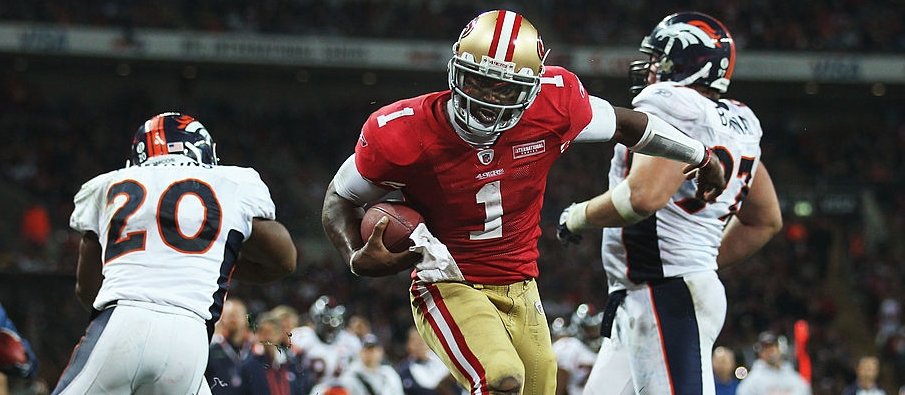
Prior to his stint in San Francisco, Smith appeared in 14 games with the Baltimore Ravens over a three-year span. The Cleveland Glenville product started two games as a rookie and appeared to have a hold on the starting gig heading into the 2008 season before a serious bout with Lemierre's Syndrome – a complication of tonsillitis – crushed his hopes and vaulted Joe Flacco instead the starting spot.
Upon his return, Smith saw limited action as part of a hybrid / two-quarterback role but as Flacco continued to emerge, the writing was on the wall for Smith leading to his departure for the 49ers.
Rounding out this group is one of the biggest draft busts in NFL history, Art Schlichter.
The 4th overall pick in the 1982 Draft, Schlichter appeared in only 13 career games and lost all six of his starts for the Colts. Schlichter saw action in three games as a rookie then missed the entire 1983 season due to a gambling suspension before starting five games in 1984. Completing just 44% of his throws with three touchdowns against seven interceptions that season, he would play in just one game in 1985 before the Colts cut him amid ongoing concerns about his off-field activities compounded by poor on-field play.
Schlichter went on to have a cup of coffee in the CFL before his best pro seasons occurred in the Arena League as he led the Detroit Drive to the 1990 championship as he captured league MVP honors. Less than three years later, he was back in trouble with the law as a result of his gambling addiction and out of football for good.
| QUARTERBACK | RD | PK | YEAR | YEARS | GAMES | GS | COMP | ATT | COMP% | YDS | TD | INT |
|---|---|---|---|---|---|---|---|---|---|---|---|---|
| C. KRENZEL | 5 | 148 | 2004 | 1 | 6 | 5 | 59 | 127 | 46.5% | 718 | 3 | 6 |
| C. BRUMBAUGH | N/A | N/A | 1930 | 8 | 96 | 49 | 34 | 121 | 28.1% | 656 | 9 | 14 |
| S. PINCURA | N/A | N/A | 1937 | 2 | 22 | 8 | 22 | 60 | 36.7% | 332 | 1 | 10 |
Craig Krenzel headlines the next grouping on the strength of 718 career passing yards over five starts, all with the Chicago Bears. Krenzel went 3-2 as a starter in 2004 but completed just 47% of his passes with three touchdowns and six picks, good for a 52.5 QB rating.
Carl Brumbaugh is a name you've likely never heard before considering his era and the fact he only played one year in Columbus before transferring to Florida for his final three years of collegiate ball. Post college, Brumbaugh starred for the Chicago Bears, orchestrating the T-formation offense to perfection. A large reason for Brumbaugh's relative anonymity to many is he shared the backfield with legends Bronco Nagurski and Red Grange. With Brumbaugh guided the offense, Chicago won back-to-back NFL titles in the early 1930s.
Brumbaugh is also credited with going on to install the T-formation offense at many professional and collegiate teams along with being a pioneer who helped invent the standard center/quarterback snap and the "laces out" spin utilized by holders.
Other quarterbacks who once donned the Scarlet and Gray but didn't make the list due to logging zero career starts include Joe Germaine (16 games, 136 yards) and John Borton (5 games, 22 yards).
In case you missed our previous looks at other positions, we've already covered running backs, receivers, tight ends, defensive backs, defensive linemen and linebackers.
